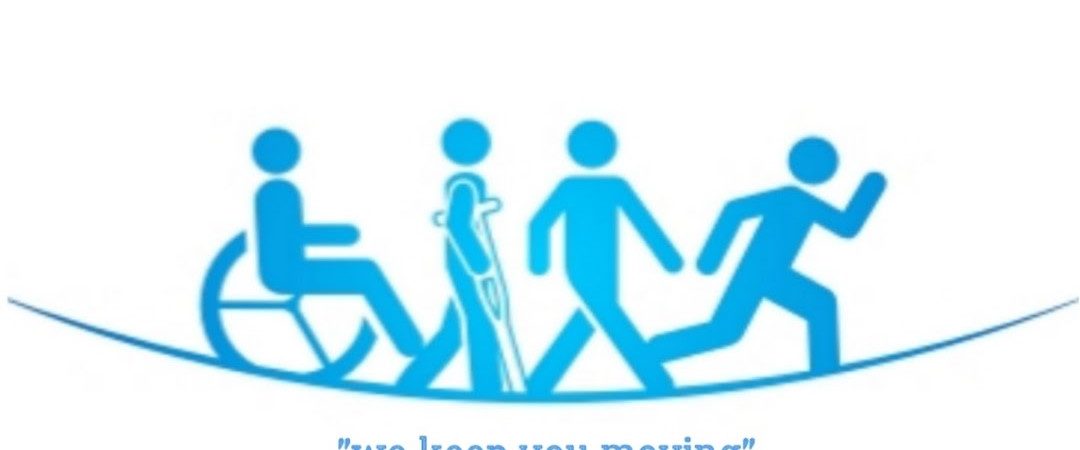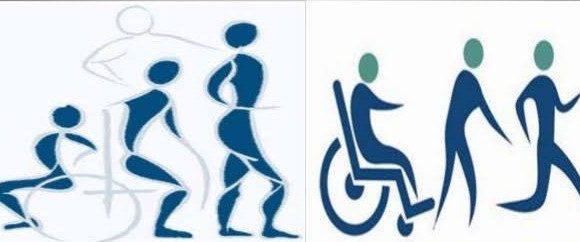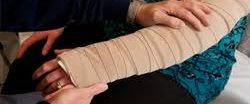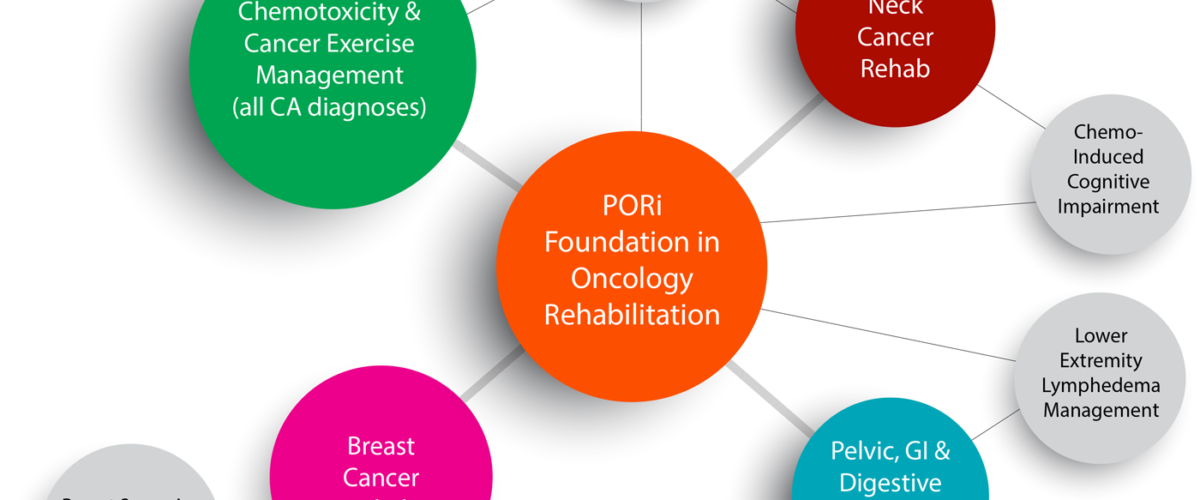BIOMECHANICS IN PATELLOFEMORAL PAIN SYNDROME – Dr. Muskan Rathor
BIOMECHANICS IN PATELLOFEMORAL PAIN SYNDROME
Dr Muskan Rathor
Lecturer (Faculty of Medical Para-Medical And Allied Health Sciences)
Tantia University, Sri Ganganagar (Rajasthan) 335001 India
AN OVERVIEW
Patellofemoral pain syndrome (PFPS) is one of the most common knee joint problems in musculoskeletal disorders presenting to outpatient clinics. Patellofemoral pain syndrome can be defined as retro-patellar or peri-patellar pain, aggravated by climbing stairs, running, squatting, cycling and long sitting with flexed knees for prolonged periods of time. The incidence of ‘‘anterior knee pain’’ is high and is located at 22/1,000 persons per year. Women are affected about more than twice as often as men, the causes for anterior knee pain are multifactorial.These include overuse injuries of the extensor apparatus (tendonitis, insertionaltendinosis), patellar instability, chondral and osteochondral damage. The patellofemoral pain syndrome (PFPS) is a common cause for ‘‘anterior knee pain’’ and mainly affects young women without any structural changes such as increased Q-angle or significant pathological changes in articular cartilage. Other associated manifestations include crepitus and functional deficit. PFPS symptoms cause many athletes to limit their sportive activities. According to some authors, the PFPS can eventually lead to osteoarthritis.The long-term prognosis is generally more favorable for young patients, but seems to be independent of the presence of cartilage damage or gender.Patients with PFPS might repeatedly visit physicians and physiotherapists to solve their problem. About 94% of these patients continue to experience pain up to 4 years after initial presentation and 25% state significant symptoms up to 20 years later.
Many authors report that a greater Q angle (> 20°) is a risk factor for developing patella-femoral pain syndrome. Also diminished strength or coordination of gluteus medius muscles may be related with an increase in hip internal rotation and adduction, with deleterious effects on the knee. Recently, several studies have reported that interactions of the hip and patella-femoral joint may contribute to PFPS. Increased Q-angle results in excessive valgus angle at the knee, which may be a predisposing factor for PFPS. It is suggested that weak hip abductors and external rotators may not provide sufficient strength to resist hip internal rotation and hip adduction during dynamic activities. The increased knee valgus angle may result in an increased lateral quadriceps muscle force on the patella, resulting in abnormal patellar tracking. PFPS is a common knee problem. Because of its multifactorial condition, the etiology is not completely understood. Recent studies have investigated the presence of hip muscle weakness in subjects in non-weight bearing condition, and drawn the hypothesis that the weak hip muscle strength may cause increased hip adduction and femoral internal rotation. This results in decreasing patellar articular contact area and increasing compressive force across the PF joint, which cause patella-femoral pain. Several kinematic studies have been conducted in PFPS subjects; however, findings are not consistent across the studies. Furthermore, findings are contradictory within the literature. This may occur due to the limited number of the study. Extensive study needs to be conducted to investigate the relationship weak hip muscle strength and knee and hip kinematic.
OBJECTIVE
- To examine the effect of hip and knee muscles strength on patella-femoral pain syndrome.
- To evaluate the effect of knee kinematics on patella-femoral pain syndrome.
- To study relationship of the gluteus muscle strength and the knee and hip kinematics during dynamic postural control task.
REVIEW OF LITERATURE
According to the literature review by Ferris et al. [1], the gluteus maximus also supports the lower extremity against the ground reaction force from full stance to contra lateral toe off during gait. In the same literature review, EMG study observed the maximal activation in the isometric contraction of the hip extensor, abduction with the resistance, hip external rotation, and hyperextension of the trunk and hip in a standing. Strong contraction was also observed at 60-90 degrees of hip flexion. The gluteus maximus is known as a pelvic stabilizer along with the gluteus medius.
Powers et al. [2], using MRI, revealed when knee flexion and extension occurs in weight bearing conditions, a maximal 13 degrees of femoral internal rotation was observed during full knee extension, while the average femoral internal rotation was 5.2 degrees in non weight bearing conditions. Minimal patellar rotation was recorded during weight bearing conditions, while a maximal 16 degrees of patellar rotation was observed at full knee extension in non weight bearing condition. This difference occurs due to screw home mechanism. In a non-weight bearing conditions, the tibia externally rotates on the femoral condyles as the knee goes into extension while the femur internally rotates to fit femoral condyles into the tibia; the tibia is unable to rotate because the distal part is fixed. Therefore, excessive femoral internal rotation increases contact pressure across the PF joint which may lead to anterior and lateral knee pain.
In 2003, Ireland et al. [3] conducted one of the first studies on the relationship between hip strength and PFPS in thirty female subjects. They reported that the maximal isometric voluntary contraction (MVIC) of the hip abduction was 26% (P < .001) lower and hip external rotation was 36% (P < .001) lower in the subjects with PFPS than those of healthy subjects.
Cichanowski et al. [4] observed the peak hip torque of all hip directions (flexion, extension, abduction, adduction, internal rotation, and external rotation) between the symptomatic side and the asymptomatic side of the PFPS subjects, and between the symptomatic side of the PFPS subjects and the healthy subjects. The symptomatic side of the PFPS subjects demonstrated significant weakness in all directions (flexion P=.033, extension P= .029, abduction P=.01 internal rotation P=.049, external rotation P=.033) except for hip adduction (P=.087) compared to randomly selected legs of the control group. Furthermore, weaker hip abduction (P=.003) and external rotation (P=.049) strength were observed in the symptomatic side of PFPS subjects compared to those of the asymptomatic side of the PFPS subjects with no significant difference in other muscles.
In 2003, Brindle et al. [5] conducted one of the first studies to identify EMG activation of the gluteus medius, VMO and VL in relation with knee and hip kinematics during stair ascent and descent in sixteen anterior knee pain (AKP) subjects. PFPS subjects had demonstrated later onset of the gluteus medius EMG onset (P=.035) and shorter duration of EMG activity (P=.032) compared to the healthy group during stair ascent. The stair descent test did not show significant delay of the onset, however, shorter duration of EMG activity was observed in the gluteus medius (P=.049), VMO (P=.023), and VL (P=.032). No significant difference in the knee flexion angle and hip orientation at toe contact was observed between groups in stair descent or ascent conditions (P> .05). Additionally, the task difference did not change the pain perception on the visual analogue scale (VAS) in AKP subjects. No alternation of knee and hip kinematics was observed regardless of the changes in duration and onset of the gluteus medius during stair descent. The investigators suggested that stair descent may not require high demand on neuromuscular control of the knee and hip joint.
Bolgla et al. [6] examined the relationship between the gluteus medius and gluteus maximus MVIC and knee and hip kinematics including knee valgus, hip adduction and hip internal rotation angles during stair descent in eighteen subjects with PFPS. The strength was normalized by the body mass. PFPS subjects demonstrated weaker MVIC of the hip external rotators (P=.002) and hip abductors (P=.006) than those of healthy subjects. The average percentile of the strength in each muscle compared to the healthy subjects was 26% less strength in the hip abductor and 24% less strength in the hip external rotator. The knee and hip angles during the stance phase were measured and averaged. The study demonstrated PFPS subjects had no significant kinematic differences in hip internal rotation (P=.60), hip adduction (P=.15), and knee valgus (P=.28) angles during the stance phase compared to the control group. Although the results were not statistically significant, PFPS subjects demonstrated a 5.7 degree greater knee varus angle (P=.28) compared to healthy subjects, while hip internal rotation was slightly greater (P=.67) and hip adduction was slightly less (P=.15) compared with healthy subjects. The study demonstrated similar strength in hip abductors (22.5 % with Brindle et al. VS 23.3% with Ireland et al.), and hip external rotators (11.1% with Brindle et al. VS 10.8% with Ireland et al.). This study did not demonstrate the relationship that weak hip abductor and external rotators may result in increased hip adduction and hip internal rotation angle. The authors suggested that lack of relationship between hip strength and hip and knee kinematics may have happened because of the task demands chosen in their study, such as stair height, numbers of the trial, and speed, were not sufficient enough to cause the kinematic changes. In addition, since the subjects have been sustaining pain for an average of fourteen months, which indicates a chronic condition, they may have adjusted their knee and hip kinematics to avoid the pain.
Willson et al. [7] assessed the lower extremity kinematics with various activities including single leg squat, running, and single leg jump in twenty female subjects with PFPS. Throughout the activities, PFPS subjects demonstrated an average of 3.5 degrees greater hip adduction (P=.012), 3.9 degrees less hip internal rotation (P=.01) and 4.3 degrees greater knee external rotation angle than the healthy subjects. These results indicated that the task demand did not change the lower extremity kinematics. Although some kinematic changes were observed in this study, it is difficult to draw the conclusion from the result. For example, the authors have suggested that the kinematic data may have included errors, and these may have resulted in decreased hip internal rotation along with increased knee external rotation, which is controversial.
Another study by Wilson et al. [8] observed the influence of fatigue on trunk and hip strength and single leg jump mechanics in the subjects with PFPS. Subjects performed five consecutive single leg jumps, followed by the exertion protocol of ten single leg squats and five single leg jumps to cause fatigue. Immediately after the fatigue protocol, subjects performed another five consecutive single leg jumps. The exertion protocol did not alter the knee and hip kinematic patterns. Both the control and PFPS groups demonstrated similar changes in almost all kinematics except for contra lateral pelvic drop. PFPS subjects demonstrated a significantly greater pelvic drop compared to the healthy subjects, and it became more significant at the end of the exertion protocol (P=.003). However, group differences were observed during the investigation with PFPS subjects compared to the control group: PFPS group demonstrated 5.8 degrees greater in hip flexion (P=.05), 4.2 degrees greater in hip adduction (P=.02), and 4.5 degrees less in hip internal rotation (P=.02) at peak knee extension moment compared to healthy subjects. MVIC strength of the PFPS subjects was 21% less in hip abduction (P< .001), 10% less in trunk lateral flexion (P= .03), and 10% less in hip external rotation (P=.07) than those of healthy subjects. Investigators suggested that the hip and trunk strength is an important factor to PFPS, however, they did not confirm the relationship between hip strength and increased hip external rotation as opposed to the general hypothesis that weak abductor and external rotator may result in increased hip internal rotation.
Dierks et al. [9] observed the knee and hip kinematics in association with hip musculature strength before and after prolonged running with twenty recreational runners. Both PFPS and healthy groups demonstrated significant reduction in hip abductor and hip external rotator MVIC over time (P<.001). PFPS group demonstrated weaker hip abduction before and at the end of running, compared to healthy subjects (P=.045, ES = 0.405). Their study also found a strong relationship between hip frontal plane kinematic and hip abductor MVIC: the hip adduction angle increased as the hip abduction MVIC decreased at the end of running (r = – 0.74). However, there was no statistically significant relationship between hip external rotator strength and hip internal rotation angle (P= .331, ES = 0.190). MVIC in the hip external rotators decreased at the end of running in both PFPS and healthy subjects, but no difference between groups was found. While hip abductor strength showed significant difference before and after running, hip external rotator had no significant difference. In addition, the study found interesting changes in the hip abduction angle between PFPS subjects and healthy subjects from heel strike to full stance during running cycle. Both groups demonstrated a similar hip abduction angle at the heel strike, while hip abduction angle increased toward the mid to late stance and increased hip adduction at the full stance. Conversely, healthy subjects demonstrated increased hip adduction angle toward the mid stance and then increased hip abduction toward the late stance to full stance. At the full stance, hip adduction angle was greater in PFPS subjects than healthy subjects. The authors suggested that this movement occurred in PFPS subjects due to the compensation mechanics of hip abduction. The opposite side of the pelvis tends to elevate in order to abduct the weaker side’s limb, decreasing compressive pressure across the PF joint, and consequently decreasing pain perceived by the PFPS subjects.
Mascal et al. [10] conducted a case study including 14 weeks of rehabilitation, focusing on hip and trunk muscle strengthening with two PFPS subjects. Great improvement was observed in the gluteus medius and gluteus maximus strength in both subjects. One subject demonstrated a 50% increase in the gluteus medius, a 55% increase in the gluteus maximus, a 317% increase in external rotators, and a 20% increase in the quadriceps strength. The other subject demonstrated a 110% increase in the gluteus medius, a 90% increase in the gluteus maximus, a 15% increase in external rotators, and 10% increase in the quadriceps. Along with these results, both subjects also demonstrated kinematic improvement. One subject demonstrated increased hip external rotation from 1.4 degrees internal rotation to 2.6 degrees external rotation and decreased hip adduction angle from 8.7 degrees to 2.3 degrees during step down.
Additionally, kinematic assessment demonstrated a decrease in hip adduction, hip internal rotation, and contra lateral pelvic drop during gait. The hip adduction angle increased at the last 85% of the stance phase during step down activity, however, post rehabilitation data indicated that the hip adduction angle was decreased at the last 80% of the stance phase. Similar kinematic changes were observed in step down activity compared with the pre rehabilitation measurement. Pain perception was improved in both subjects, with one subject being able to stand, walk, ascend and descend stairs without pain. The other subjects reported great reduction in pain to ascend and descend stairs with occasional minimal discomfort. The intervention was effective to these subjects. The ideal outcomes may be because of the close attention on the subjects during on site rehabilitation. The subjects were closely monitored by the therapist so that the subjects were able to collect their kinematics if they were not appropriate. In addition, a deficit of hip strength was the factor contributing to PFPS for those subjects. Although the result was based on the case studies of two PFPS subjects, outcomes could support the concept that hip muscle weakness may contribute to PFPS. Future study should be conducted with larger population for validation.
Olmstead et al. [11] observed the reach distance in eight directions in subjects with chronic ankle instability. Lateral and antero-lateral reaches had significantly shorter reach than all other directions, and a longer reach in the posterior and postelo-medial directions compared with the healthy limbs. The researchers also found the sum of the reaching distances in all eight directions for the chronic ankle instability subjects was shorter than that of healthy subjects as well as healthy limb of the chronic ankle instability subjects.
Gribble et al. [12] observed a shorter reach distance and less knee flexion angle with subjects with chronic ankle instability compared with healthy subjects. The SEBT has also been used to predict the lower extremity injuries in a high school basketball team.
Pliskey et al. [13] measured three directions of the SEBT (anterior, postero-medial, and postero-lateral). Subjects with an average of four centimetres reach difference between right and left leg had 2.5 times more of a chance of sustaining a lower extremity injury during the season. They also found 6.5 times more chance of lower extremity injuries in females, with less than 94% of the average of all three directions normalized to the limb length. While most studies of the SEBT had been done with the ankle, there are only few studies that had investigated the influence of knee pathology during the SEBT.
Aminaka and Gribble [14] demonstrated a decrease in the normalized reach distance in the anterior direction, along with an associated increase in pain, in twenty subjects with PFPS, compared with twenty healthy subjects.
Ebersole et al. [15] reported a shorter reach distance in the posterior direction in PFPS subjects compared with healthy subjects.
Earl and Hertel [16] quantified the integrated electromyographic (iEMG) activation patterns of the VMO, vastuslateralis, medial hamstrings, biceps femoris, anterior tibialis, and gastronemius, and knee and ankle saggital plane kinematics during the SEBT. They found that quadriceps activity was greatest in anterior reach direction while hamstrings activity was greatest in posterior direction. The gastronemius did not change its activities, regardless of the direction. Knee flexion angle was greater in the anterior, antero-medial, medial, and postero-lateral directions (P < .05) than the other directions. Ankle dorsiflexion was greater in anterior, antero-medial, and medial directions than that of other directions (P < .0005). Gluteus medius is a primary hip abductor and secondary hip external rotator; while the gluteus maximus is a primary hip extensor and external rotator. EMG studies have observed these two muscles are activated during a single leg squat in concentric and eccentric manner to control knee and hip kinematics in the frontal plane. Considering that the knee and hip movements occurring at the SEBT are similar to those of a single leg squat, the SEBT will be an appropriate method to measure the activation of those two muscle groups, while adding additional challenges related to the production of dynamic postural control.
METHODOLOGY
The proposed study is case control cohort (prospective) study of Influence of Hip muscles and knee kinematics on Patello-femoral pain syndrome. This Study has been done at Sriganganagar College of Allied Health Sciences, Sriganganagar, Rajasthan after approval of the institutional scientific & ethical committee.
SAMPLE SIZE – Twenty subjects participated in this study and completed the test (PFPS: Age= 21.07±3.27yrs, Ht= 172.09±10.26cm, Mass= 69.96±9.05kg;
Control: Age= 20.93±3.00yrs, Ht= 170.18 ±8.94cm, Mass= 70.25 ±8.57kg)
All subjects had no history of osteoarthritis, surgery (including arthroscopy), fracture, patellar dislocation/subluxation, or ligamentous or other soft-tissue injury, or a concussion within the last year. Additionally, the PFPS subjects presented with diffuse, unilateral anterior knee pain for at least 8 weeks, exacerbated by stair climbing, sitting, walking, running, squatting, knee flexion and isometric quadriceps contraction. In addition, none of the subjects could be participating in physical therapy 30 days prior to the study.
Control subjects were matched for sex, age, weight, and mass. Additionally, control subjects were designated a matched “injured side” for the purposes of between group comparisons. For instance, if the first PFPS subject had a symptomatic right side, then the right limb of the subsequent matched control subject was used. The subjects read and sign the informed consent before participating in the study.
METHOD OF COLLECTION OF DATA- Subjects reported to Sriganganagar College of Allied Health Sciences, Sriganganagar, Rajasthan. They read and signed the informed consent approved by the Institutional review board.
The subjects were evaluated for 1) static kinematics in anatomical position (i.e. knee valgus and knee varus angle), 2) normalized average EMG of the GMed ,GMax, and VM activities during SEBT, 3) normalized reaching distance (MAXD) during the SEBT, 4) kinematic changes of the knee in frontal plane at the touchdown of the SEBT, and 5) VAS for measuring subjective pain pre-test, during test and post-test. These measures were assessed on the injured limb of the PFPS subjects and a matched limb of the Control group, designated for both groups as the “test limb”. For instance, if the symptomatic side/test limb of a PFPS subject was the right limb, then the matched limb of a matched Control group subject was also the right limb, and served as the test limb.
Subjects were asked to report their knee pain on the visual analogue scale (VAS) (Appendix B) before test. Leg length of the test limb was recorded (cm) at the beginning of the session while lying supine on a plinth from the ASIS to the middle of the medial malleolus. The skin areas for placement of the EMG electrodes on the test limb were cleaned with an alcohol swab, shaved and debrided with sandpaper. A pair of disposable Ag/AgCl surface electrodes (0.8cm diameter, centre-to-centre inter-electrode distance=1.5cm, (Noraxon U.S.A., Inc. Scottsdale, AZ) were used. The electrodes were placed at one-half of the distance between the iliac crest and greater trochanter for the GMed, and at half of the distance between the greater trochanter and ischial tuberosity for the GMax. The electrode placement for VM was approximately 4cm from the superomedial angle of the patella, at 45° to the long axis of the femur.
Maximum voluntary isometric contraction (MVIC) of both muscle groups for the testing leg was measured according to previously published methods.
GMed MVIC was measured with subjects in the side-lying position on a treatment table. Subjects were asked to abduct the hip approximately 30° with slight hip external rotation and extension and hold it in place against the strap at the distal posterior thigh.
The MVIC of GMax for hip extension was measured in the prone position with 90° knee flexion while the pelvis is stabilized by the strap. Subjects performed 30° of hip extension against the other strap positioned at the distal posterior thigh.
The MVIC of GMax for hip external rotation was performed while the subject was seated on a treatment table with the hip and knee flexed to 90°. The subject was asked to bring the foot toward the midline of the body against the strap positioned at the medial malleolous.
Knee extension MVIC was performed in a sitting position similar to the hip external rotation MVIC. The subject was asked to bring the knee into approximately 30° flexed position, and then held the position against the strap. The MVICs were performed three times for five seconds for each muscle. For each MVIC trial, the three seconds that showed the highest amplitude of activation were recorded for data analysis. Following five minutes rest after completing the MVIC measurement; electromagnetic sensors were attached at the sacrum, lateral thigh, lateral shank, and foot. The wires and sensors were secured to the skin with an elastic tape or a strap.
For the SEBT, subjects were asked to stand on the middle of the SEBT mat on the test limb in bare feet with their hands on their hips. Subjects were instructed to reach into the anterior direction along the tape measure, using the toes of the non-standing leg to make a touch as lightly as possible, and then return to the starting point, resuming a double-leg stance. The speed of the task was selected at subjects’ preference. For this study, the anterior direction was used as the reaching directions. The reaching distance was marked and measured in centimetres. All measures were recorded by the same investigator. Prior to the test, after demonstration by the PI, subjects were allowed to complete four practice trials to reduce the learning effect. Following five minutes of rest, subjects performed five test trials reaches. Each trial was separated by 15 seconds of rest. Subjects were asked to repeat the trial if the stance foot was lifted while reaching, the subject did not make a touchdown on the designated line, or the subject lost balance and shifted the stance foot or touched down in an attempt to recover during the trials.
The recorded reach distance was normalized to the measured leg length and reported as a percentage, based on previous study (%MAXD).
During the testing session, subjects were asked to report the amount of perceived pain associated with the SEBT task using a VAS. The VAS instrument was administered before the practice trials begin, immediately upon completion of all the test trials (rating their worst pain during the test performance), and also five minutes after completing the test. The subjects were asked to place a mark on the horizontal line that corresponded with the level of pain they perceived in their injured limb for each of these assessments. The placement of the mark was measured in millimetres from the left side of the line (No Pain) and recorded as the pain score.
The EMG of three muscle groups during the MVICs and the SEBT was collected through the 16-channel telemeterized EMG system integrated with the Motion Monitor data acquisition system, using a sampling rate of 1000 Hz. The EMG data was measured from the beginning of the SEBT to the end of the SEBT. The mean iEMG data during the SEBT was normalized by the mean iEMG value of three seconds of MVIC.
The EMG data was filtered with a band pass filter (low pass 500Hz, high pass of 20 Hz). The data was exported to a custom made Excel (Microsoft Corp, Redmond, WA) spreadsheet to calculate the iEMG value. The iEMG was defined as the area under the linear envelope of each EMG activation. iEMG data of the MVIC was divided by 3000 ms to obtain average EMG. iEMG of the SEBT was divided by the amount of time (ms) which each subject needed to complete the task to calculate average EMG during the SEBT. The average EMG of the GMed, GMax (hip extensor and hip external rotator) and VM from the five trials for each muscle were calculated and normalized by the average EMG from the MVICs of each muscle.
Simultaneously, knee kinematics were collected by with the electromagnetic tracking system and a standard range transmitter using a sampling rate of 100 Hz, and integrated with the Motion Monitor software. The frontal plane angle of the knee was recorded at the furthest reach during the SEBT. A 3rd order low pass Butterworth filter with a cut off at 20 Hz was applied to the kinematic data. A virtual event marker was placed in the data by a co-investigator observing the trials so that the point of maximum reach is designated and the kinematic and EMG data may be time-matched. A virtual marker was placed at the beginning and the end of the task as well. The knee valgus angle was recorded as a frontal plane kinematic value at the point of touch down (visually noted and annotated with a virtual event marker during testing), and from the beginning to touch-down during the SEBT.
DATA ANALYSIS
For the dependent variables, the means and standard deviation were used for statistical analysis. For each of these variables, paired t-test were employed to compare the data between the PFPS and control groups for EMG, SEBT and Knee valgus angle. For dependent variable #4, the VAS data was a single assessment at each time point. A one-between (Group) and one-within (Time) repeated measures ANOVA was performed for the VAS data. Level of significance was set at p < .05 for all analyses. In the event of statistically significant interaction (VAS only), a Tukey’s post-hoc test was applied.
Power analysis calculation
The power analysis was based on data collected from the research laboratory of the faculty advisor and published work by other authors that utilized similar dependant variables (GMed EMG, MAXD, knee valgus angle) and comparisons that were used in this proposed study. Using these data and an online statistical calculator, sample size with a desired level of statistical significance at p<.05 and a power level equal to or greater 0.80 was calculated.
%MAXD
In a recently published study under the direction of the faculty advisor subjects with (n=20) and without PFPS (n=20) performed the anterior reach of the SEBT. Those with PFPS produced significantly less normalized reaching distance (63.15±1.3%) compared to Healthy control subjects (65.2±1.3%). Based on this relationship, to achieve a power of .80, 8 subjects per group were needed.
Knee Valgus Angle
Claiborn et al. reported the amount of maximum knee valgus angle during a single-leg squat in healthy subjects to be (3.21±4.92º). Assuming that the SEBT is a series of single-leg squats, this task could be used as a comparison to the SEBT. In that study, only healthy subjects were examined. In our study, we would hope to observe at least a 10% difference in knee valgus angle between the PFPS and healthy subjects.
GMed EMG
Brindle et al. examined the difference in GMed duration during a stair descent task between those with and without PFPS. The control subjects produced a significantly increased duration in GMed activation (758±115.7 ms) compared to the PFPS subjects (758±115.7 ms). Based on these means and standard deviations, to achieve a power level of .80, 10subjects/group was needed in this study.
Summary of power analyses
Based on these calculations, we needed 10 subjects with PFPS and 10 healthy control subjects to achieve a statistical power level of .80. Therefore, a total of 20 subjects were enrolled in this study.
RESULTS
Knee valgus angle
There was a significant difference between groups for knee valgus angle at touch down during the anterior reach on the SEBT (p= .022, t=-2.40) (Figure1). The PFPS group demonstrated greater knee valgus angle (-2.266±10.278°) compared to the control group (7.081±10.008°) (Figure1). There was a large effect size associated with this difference (d=0.92).
During the SEBT, the PFPS group also demonstrated significantly less knee varus displacement (1.953± 9.933°) compared to the control group (11.689 ± 8.920°) (p=.011. t=-2.70) (Figure2). There was a large effect size with this difference (d=1.03).
Figure 1. Frontal Knee Kinematic at Touchdown (Knee Valgus)
* indicates group difference (p= .022, t= -2.40, ES=0.92).
Figure 2. Frontal Knee Kinematics Displacement
* indicates group difference (p=.011, t= -2.70, ES=1.03).
Normalized reach distance (%MAXD)
There was a statistically significant difference between groups for normalized reach distances in the anterior reach (p=.014, t=-2.60). The PFPS group demonstrated shorter MAXD (66.17 ± 5.0%) compared with the control group (70.84 ± 4.40%) (Figure3). There was a large effect size associated with this difference (d=0.97).
Figure 3. Normalized Reach Distance (%MAXD)
* indicates group difference (p= .014, t= -2.60, ES=0.97).
Normalized reach distance (%MAXD) = (Reach distance / leg length)*100
Pain on the Visual Analogue Scale (VAS)
There was a statistically significant group by time interaction for VAS (F2,52=4.70, p<.001). Tukey’s post hoc revealed that the PFPS group demonstrated significantly increased pain at pre-, during, and post- test compared to the control group (PFPS: Pre=0.807 ± 1.136, during=2.607 ± 1.477, post=1.714 ± 1.310, Control: pre=0.079±0.267, during=0.243±0.539, post=0.086±0.266) (Figure 4). Large effect sizes were associated with these differences (pre-test: d=0.88, during test: d=2.13, post-test: d=1.72) (Table 5). Furthermore, the PFPS group demonstrated that pain during the test as well as during the post-test was significantly higher compared to pre-test pain; additionally post-test pain was significantly less compared to the pain during the test. (Figure 4). There was also moderate to large effect size related to these results (pre vs. during: d=1.37, pre vs. post: d=0.76, during vs. post: d=0.62).
Figure 4. Visual Analogue Scale (VAS), Group by time interaction (F2,52=4.70, p<.001)
* indicates group difference at pre- during, and post- tests.
# indicates significant difference between pre- and during tests within the PFPS group.
† indicates significant difference between pre- and post- tests within the PFPS group.
% indicates significant difference between during and post-test within the PFPS group.
Normalized average EMG of the vastusmedialis during the SEBT
The PFPS group demonstrated significantly greater normalized average EMG compared to the control group (p=.048, t=2.072, PFPS=132.5±77.2%, Control=87.7±23.0%) (Figure 5). There was a large effect size associated with this difference (d=0.89) .
Figure 5. Normalized Average EMG of VastusMedialis (%MVIC)
* indicate group difference
(p= .048, t=2.072, ES=0.89).
Normalized average EMG of the gluteus medius during the SEBT (%MVIC)
There was no statistically significant group difference (p= .790, t=-0.270, PFPS=42.91±23.22%, Control=45.41±25.77%) (Figure 6). A small effect size was associated with this result (d=0.10).
Figure 6. Normalized Average EMG of the Gluteus Medius (%MVIC)
(p= .790, t= -.270, ES=0.10)
Normalized average EMG of the gluteus maximus (hip extensors) during the SEBT (%MVIC)
There was no statistically significant difference in the EMG of the gluteus maximus for the hip extensor between groups (p= .136, t=1.537, PFPS= 28.6±10.51%, Control= 15.7±68.6%) (Figure 7). There was a moderate effect size associated with this difference (d=0.58).
Figure 7. Normalized Average EMG of the Gluteus Maximus
(%MVIC) (Hip Extensors)
(p= .136, t= 1.537, ES=0.58)
Normalized average EMG of the gluteus maximus (hip external rotators) during the SEBT (%MVIC)
There was no statistically significant difference observed in the EMG of the gluteus maximus for the hip external rotator (p= .171, t=1.409, PFPS= 229.83±133.03%, Control= 166.56±102.61 %) (Figure 8). There was a small effect size was associated with this result (d=0.53).
Figure 8. Normalized Average EMG of the Gluteus Maximus (%MVIC) (Hip External Rotator)
(p= .171, t= 1.409, ES=0.53)
DISCUSSION
Knee kinematic alteration
It was hypothesized that PFPS subjects would demonstrate an increased knee valgus angle during performance of the SEBT compared to the healthy subjects. Our results support this hypothesis, since the PFPS group demonstrated increased valgus angle at the touchdown during the anterior direction of the SEBT. In addition, the PFPS group demonstrated significantly smaller varus displacement from the initiation of the touchdown event during the reaching task compared to the control group. Large effect size helps to support these findings. It has been suggested that insufficient hip abductor and hip external rotator strength might be associated with dynamic malalignment, such as increased knee valgusangle. Weak hip abductor and external rotators may not resist hip adduction and hip internal rotation during a dynamic postural control task, allowing an increased knee valgus angle. This malalignment increases contact pressure on the patellofemoral joint, which may contribute to wearing of patellar articular cartilage as the patella slides superiorly and inferiorly on the internally rotated femur as knee flexes and extends, potentially resulting in PFPS. The result supported our hypothesis, but the finding is contradictory to a previous study that investigated knee valgus angle during the stair descent task between PFPS and healthy subjects.
Hip and knee musculature activation
It was hypothesized that PFPS subjects would demonstrate reduced muscle activities of GMed, GMax and VM during performance of the SEBT compared to the healthy subjects. Our hypotheses were not supported as our study did not find significant differences in GMed and GMax EMG activities during the anterior reach of the SEBT, while subjects with PFPS demonstrated increased VM normalized average EMG compared with the healthy subjects during the anterior reach of the SEBT. In addition, there was a large effect size associated with VM activation, which may help to supports this significant difference between groups.
It was unexpected that the subjects with PFPS, who have been presumed to have weakness of the VM, would demonstrate significantly higher VM activity during the SEBT compared to the healthy group. Several studies have shown significantly delayed onset of VM relative to the vastuslateralis in subjects with PFPS compared with that of healthy subjects during stair ascent and descent tasks. Furthermore, previous studies have demonstrated that the quadriceps strengthening decreased knee pain in the VAS although the rehabilitation protocol included knee and hip muscle strengthening.
Considering that, we expected less VM activities during the SEBT in the PFPS subjects. Our results may be due to the increased VM eccentric contraction during the down phase of the SEBT. The evidence that subjects with PFPS reported increased pain during the SEBT in our study could help to explain this result. Because PFPS is a chronic condition, most subjects with PFPS likely would know that knee flexion or extension would cause knee pain. In addition, a previous study observed that the subjects with PFPS reported increased knee pain during stair descent compared to the stair ascent. Therefore, subjects with PFPS tend to be cautious to flex their knees by slowing down this movement (increasing the duration), which may be eventually increasing the duration of the reach task and total normalized average EMG activation of the eccentric contraction of the VM. Future study should investigate the duration and activation of the eccentric and concentric contraction phase separately in both PFPS and healthy groups for the comparison. It was also unexpected that the PFPS group would demonstrate similar normalized average EMG s of GMed and GMax to those of the healthy group during the SEBT. Although no statistically significant difference was found in GMax activation as a hip extensor or hip external rotator, there was moderate effect sizes associated with these results. In our study, the PFPS subject demonstrated increased hip extensors and external rotators EMG activities compared to the control subjects. It may indicate that the increased hip extensors’ or external rotators’ activities may be associated with the kinematic and VM EMG alteration. It should be noted that the normalized average EMG of hip external rotators exceeded 100%, which may indicate that subjects could not perform MVIC of hip external rotation; therefore EMG activities during the SEBT exceeded that of MVIC.
Pain on the VAS
It was hypothesized that PFPS subjects would experience more knee pain presented by the visual analogue scale (VAS) at rest compared to the healthy subjects. In addition, we hypothesized that the VAS score would increase during performance of the anterior reach task on the SEBT compared to pre and post performance in the PFPS subjects. Our study demonstrated that the subjects with PFPS reported more knee pain at pre, during, and post test compared to the healthy subjects. Furthermore, the subjects with PFPS demonstrated increased knee pain during and post tests compared to the pre test. Increased knee pain may indicate that the anterior reach task on the SEBT is appropriate task to induce knee pain in the PFPS subjects and may be associated with shorter reach distance in the subjects with PFPS compared with that of healthy subjects. While exacerbation of pain did not seem to alter the hip muscle activities perhaps the observed alterations of the hip and knee kinematic were influenced by pain. Future analysis of the data will explore these relationships.
Normalized anterior reach distance (%MAXD)
It was hypothesized that the healthy subjects would reach farther than PFPS subjects during the anterior reach task of the SEBT, indicating a poor dynamic postural control in the PFPS subjects. Our results supported this hypothesis, since PFPS subjects demonstrated shorter reach distance on the SEBT compared to the healthy subjects, and is supported by previous investigation. Since subjects with PFPS demonstrated increased pain during the SEBT relative to that in the pre test, the reduction in the anterior reach may be affected by the knee pain. Furthermore, increased knee valgus angle in the subjects with PFPS may affect this reach distance reduction. As it is known that the presence of the knee valgus angle accompanies other kinematic abnormalities of the lower extremity such as foot pronation, tibial internal rotation, pelvic rotation, lateral pelvic drop, we could speculate that increased knee valgus angle may have contributed to the decreased anterior reach distance of the SEBT in the subjects with PFPS. With increased knee valgus angle, the opposite side of the pelvis tends to rotate externally, which may result in the reduction of the distance. Previous studies have reported reduced MVIC of the hip abductor, hip extensor, and hip external rotator groups, assuming that this weakness may result in the increased valgus angle during the dynamic activities. Therefore, we may assume that less normalized average EMG activities would be present with PFPS. However, GMed and GMax normalized average EMG activities during the SEBT remained similar between PFPS and control groups. Therefore, this reduction in anterior reach distance may not be related with the normalized average EMG activity of those muscles.
CONCLUSION
The results derived from our study indicate that PFPS subjects demonstrate increased knee valgus angle in the anterior reach task on the SEBT. In addition, the PFPS group demonstrated shorter reach distance on the SEBT, along with increased pain on the VAS. On the contrary to our hypothesis, subjects with PFPS demonstrated greater VM activities than healthy subjects. In the sagittal plane movement, VM may play an important role to maintain the balance, while GMed and GMax may not be the primary muscle for the postural control during the task.
REFERENCES
- Ferris E, Heckler A, Maitland L, Taylor C. A structured review of the role of gluteus maximus in rehabilitation.J Physiotherapy. 2005; 33(3): 95-100
- Powers CM, et. al. The influence of altered lower-extremity kinematics on patellofemoral joint dysfunction: A theoretical perspective. J Orthop Sports PhysTher.2003; 33(11): 639-646.
- Ireland ML, Willson JD, Ballantyne BT, Davis IM. Hip strength in females with and without patellofemoral pain. J Orthop Sports PhysTher.2003; 33(8): 671-676.
- Cichanowski HR, Schmitt JS, Niemuth PE. Hip strength in collegiate female athletes with patellofemoral pain. Med Sci Sports Exerc.2007;39 (8)1227-1232.
- Brindle TJ, Mattacola C, McCrory J. Electromyographic changes in the gluteus medius during stair ascent and descent in subjects with anterior knee pain. Knee Surg Sports TraumatolArthrosc. 2003;11(4): 244-51.
- Bolgla LA, Malone TR, Umberger BR, Uhl TL. Hip strength and hip and knee kinematics during stair descent in females with and without patellofemoral pain syndrome. J Orthop Sports PhysTher. 2008; 38(1): 12-8.
- Willson JD, Davis IS. Lower extremity mechanics of females with and without patellofemoral pain across activities with progressively greater task demands.ClinBiomech. 2008; 23(2):203-11.
- Willson JD, Binder-Macleod S, Davis IS. Lower extremity jumping mechanics of female athletes with and without patellofemoral pain before and after exertion.Am J Sports Med. 2008; 36(8):1587-96.
- Dierks TA, Manal KT, Hamill J, Davis IS. Proximal and distal influences on hip and knee kinematics in runners with patellofemoral pain during a prolonged run. J Orthop Sports PhysTher.2008; 38(8):448-56.
- Mascal CL, Landel R, Powers C. Management of patellofemoral pain targeting hip, pelvis, and trunk muscle function: 2 case reports. J Orthop Sports PhysTher.2003; 33(11): 647-60
- Olmsted LC, Carcia CR, Hertel J, Shultz SJ. Efficacy of the Star Excursion Balance Tests in Detecting Reach Deficits in Subjects with Chronic Ankle Instability.J Athl Train. 2002 Dec; 37(4):501-506.
- Gribble P, and Hertel J. Consideration for normalizing measures of the star excursion balance test. MeasPhysEduExercSci.. 2003; 7(2): 89-100.
- Plisky PJ, Rauh MJ, Kaminski TW, Underwood FB. Star Excursion Balance Test as a predictor of lower extremity injury in high school basketball players. J Orthop Sports PhysTher.2006; 36(12): 911-9.
- Aminaka N, Gribble PA. Patellar taping, patellofemoral pain syndrome, lower extremity kinematics, and dynamic postural control.J Athl Train.2008; 43(1): 21-28.
- Ebersole KT, Sabin MJ, Haggard HA, Kusch BM. The influence of patellofemoral pain on the star excursion balance test performance. J Athl Train.2008; 43(3) (Suppl): S-49-50.
- Earl JE, and Hertel J. Lower-extremity muscle activation during the star excursion balance tests. Sports Rehabil. 2001; 10(2):93-104.
- Gribble PA, Hertel J, Denegar CR, Buckley WE. The effects of fatigue and chronic ankle instability on dynamic postural control.J Athl Train.2004; 39(4):321-329.
- Hertel J, Miller J, Dendgar CR. Intratester and intertester reliability during the star excursion balance tests. Sports Rehabil.2000; 9: 104-116.
- Anderson FC, and Pandy MG. Individual muscle contractions to support in normal walking. Gait &posure. 2003: 17:159-169.
- Powers CM, Ward SR, Fredericson M, Guillet M, Shellock FG. Patellofemoral kinematics during weight-bearing and non-weight-bearing knee extension in persons with lateral subluxation of the patella: a preliminary study. J Orthop Sports PhysTher.2003; 33(11): 677-85.
- Robinson RH, Gribble PA. Support for a reduction in the number of trials needed for the star excursion balance test. Arch Phys Med Rehabil.2008; Feb: 89(2):364-70.
- Willson JD, Davis IS. Utility of the frontal plane projection angle in females with patellofemoral pain.J Orthop Sports PhysTher.2008; 38(10):606-15.
- Delagi EF, ed. Anatomic guide for the electromyographer – the limbs. 2nd ed. Springfield, IL: Charles C Thomas Publisher; 1981.











